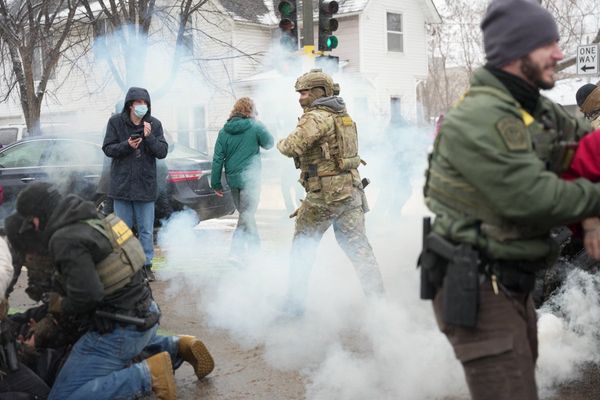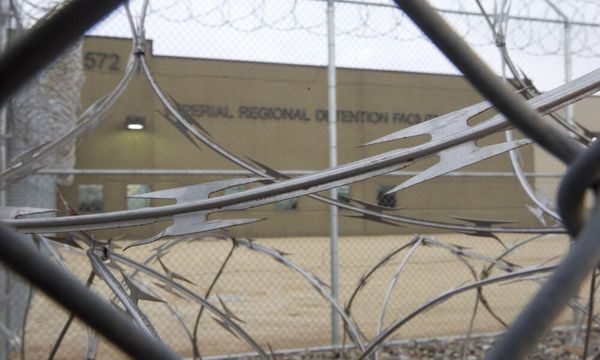Prime Minister Narendra Modi will visit Kashmir on March 7 — for the first time since his government revoked Article 370 in 2019 — two weeks after his visit to Jammu, where he announced a slew of development projects, distributed letters of appointment to 1,500 new government recruits, opened an IIT campus and inaugurated the erstwhile State’s first electric train. In Srinagar, he is to address a public meeting, and considering that elections are to be held soon, he is certain to make more announcements. But as far as the Bharatiya Janata Party (BJP) is concerned, two moves by the government in Jammu & Kashmir (J&K) — one last month, and another in 2022 — have already paved the way for what it hopes will be its first ever Lok Sabha seat in the Kashmir Valley. That seat is Anantnag constituency in south Kashmir.
On February 6, the Lok Sabha passed the Constitution (Jammu and Kashmir) Scheduled Tribes Order (Amendment) Bill, 2024. It was passed in the Rajya Sabha three days later.
An amendment and a community’s protests
The amendment expands the list of the State’s Scheduled Tribes (ST) to add four groups to the existing 12: Pahari, Gadda Brahmin, Koli and Paddari. Of the other groups in the category, first drawn up in J&K in 1991, the Muslim community of Gujjar-Bakerwal were the most dominant.
Their protests that Paharis cannot be considered a tribe, but are a linguistic category encompassing several Hindu and Muslim castes, and include forward/upper castes, Other Backward Classes and Scheduled Castes (SC), were to no avail.
The Gujjars argued that Paharis were socially, economically and educationally advanced, and well represented politically. They were also beneficiaries under three separate existing quotas in government employment and education — for people living near the Line of Control (LoC), for people living in backward and remote areas, and a 4% quota in government jobs, carved out specifically for Paharis in 2020.
The Paharis had since 1989 sought to be categorised as ST but the demand was rejected several times, including in 2014, when the Omar Abdullah government recommended it. But the BJP warmed up to its potential, and immediately after the revocation of Article 370 in 2019, began the prep work for it. The jobs quota for Paharis was announced within six months. In 2020, it also set up the Jammu & Kashmir Socially and Educationally Backward Classes Commission, which was headed by a retired judge, Justice G.D. Sharma.
The panel’s recommendation for inclusion of Paharis as ST was reportedly made just before Union Home Minister Amit Shah’s public rally in October 2022, at Rajouri and Poonch, on his first visit to J&K after the changes in August 2019. As word spread, thousands of Paharis attended the meeting, where Mr. Shah assured the community that it would be included as an ST soon. A month later, the National Commission for Scheduled Tribes signed off on the recommendation.
The government introduced the Bill last August, but put off enacting it during the winter 2023 session due to large-scale protests by Gujjars. This time, the matter was not listed until the morning of the day it was taken up. The government was prepared for any outbreak of Gujjar protests, and prevented mobilisation, including by swiftly suspending Internet services in Rajouri-Poonch, the two Jammu districts where both communities are most numerous.
Reserved seats and a redrawn constituency
The other step came via the J&K Delimitation Commission, whose recommendations the government accepted in May 2022, months before the G.D. Sharma panel made its recommendations.
The Commission redrew the Union Territory’s electoral map, carving out seven new Assembly constituencies — six in Jammu and one in Kashmir — taking the total to 90. (The pre-2019 J&K had 87 seats for the Indian side of the LoC, out of which four were in Ladakh). Nine seats were reserved for STs, the first time political reservation was extended to this category in J&K. As per Census 2011, the tribal population is 15 lakh (this included Ladakh).
Of the nine reserved ST seats, five are in Rajouri-Poonch, where, until February this year, the Gujjars were the predominant ST. The reserved seats were welcomed by the community as a long-awaited reward for its “loyalty” to India. But the joy was short-lived. As Paharis celebrated Mr. Shah’s assurance five months later by lighting lamps and beating drums, the Gujjars read the writing on the wall.
Those identifying as Pahari-speakers constitute 7% of the total J&K population, that is about 9.7 lakh, according to the language/mother tongue data published in 2018 by the Census based on the 2011 enumeration. Gujjars, who speak Gujjari or Gojri, are 11.35 lakh.
In Rajouri, the 2011 Census identified a ST population of 22,9692. As Gujjars were the only ST in the district at the time, this can be taken as the number of Gujjars in Rajouri, just over 36% of its total population of 6,42,415. In Poonch, the corresponding number is 17,1011, or 36.93% of the district’s population of 47,6835.
Everyone else is counted as Pahari. Without official recognition until now, Paharis were fragmented by their other identities — Hindus, Muslims, Sikh, SCs, and other dialect groups (Pahari comprises many dialects).
Sliced by religion, Rajouri was 62% Muslim, while Poonch was 90% Muslim.
Today, the two districts are tribal, and the Paharis are the dominant ST in seven of the eight Assembly segments in them.
The Delimitation Commission also did one other thing. Apparently to even out the number of Assembly segments in each parliamentary constituency, it broke through the natural division created by the Pir Panjal mountain range between Jammu and Kashmir, removed Poonch and Rajouri from the Jammu Lok Sabha constituency, and added it to Anantnag in South Kashmir. Further, it took out the Shopian Assembly constituency (Shopian is also a South Kashmir district), from the middle of the Anantnag parliamentary constituency, and made it a non-contiguous part of the Srinagar parliamentary constituency.
At the time, the new Anantnag-Rajouri constituency made little sense — by bringing together the Muslims of Jammu and Kashmir, it even mirrored the long-rejected Chenab formula. Given the newly minted tribal identity of the two districts, it is no longer that puzzling.
In a few weeks time, when elections in J&K’s five parliamentary constituencies are likely to be held along with the rest of the country, the redrawn constituency and the amended J&K ST list together represent the BJP’s long-cherished wish for a toehold in Kashmir.
The BJP’s math
In 2019, the old Anantnag seat was won by the National Conference’s (NC) Hasnain Masoodi, who defeated Peoples Democratic Party (PDP) leader Mehbooba Mufti. Since 1999, the constituency has been alternately held by Ms. Mufti and a different NC candidate each election.
The new Anantnag-Rajouri constituency has about 19 lakh voters. About 10 lakh are Kashmiri Muslim in the Anantnag part. Voter turnout is usually low due to the fear of militant attacks or other backlash. In 2019, the Pulwama attack had cast an additional shadow, and the turnout was 8.76%, a sharp drop from the 28.54% in 2014, the best turnout since 1999. The BJP will hope it stays low and divided between the regional parties.
Anantnag also has 40,000 Kashmir Pandit migrant voters. For the same security reasons, their participation is not assured.
Pahari voters number some 4.7 lakh, including some 40,000 on the Anantnag side. The BJP would hope that this community will set aside its internal religious divides and turn out in large numbers, especially in the comparatively safer Rajouri side. Strengthening these hopes, a host of Pahari leaders have recently quit the NC and joined the BJP.
The Gujjar-Bakerwal voters number over 4 lakh, including more than a lakh in the Anantnag areas. They were expected to be well disposed to the BJP for giving the community political reservation, and for extending, after the revocation of Article 370, the Scheduled Tribes and Other Traditional Forest Dwellers (Recognition of Forest Rights) Act, 2006 to J&K.
But the saffron party cannot take this community’s support for granted any more. It is not just their embitterment at sharing the 10% ST quota with Paharis. The Gujjar-Bakerwal’s traditionally good relationship with the Indian Army has frayed with the spike in terrorist incidents in the Poonch-Rajouri area. The community is still reeling from the ghastly incident of torture-cum-three custodial deaths last December. Still, the BJP has not lost all hope, as evident from its recent addition of the prominent Gujjar leader Haji Mohammed Hussain from the NC.
The search is now on for the right candidate. The coming days will bring more clarity on how the BJP will work on its Mission Anantnag, but it is reasonable to expect the usual combination of saam, daam, dand, bhed.
Nirupama Subramanian is an independent journalist







